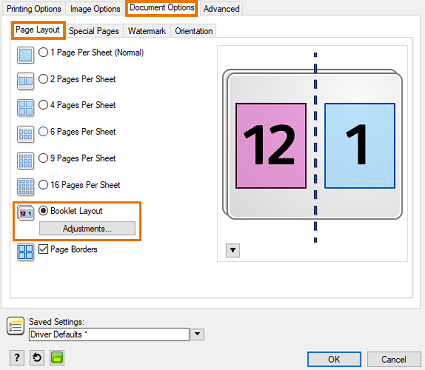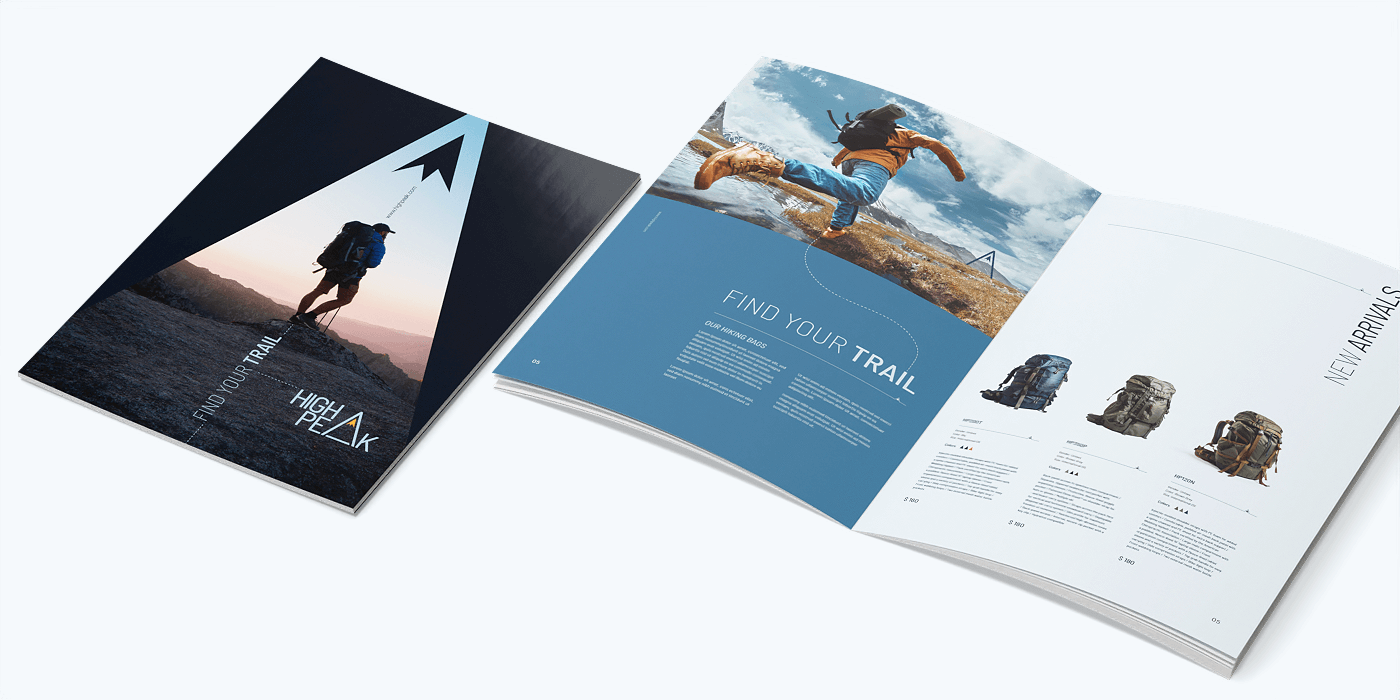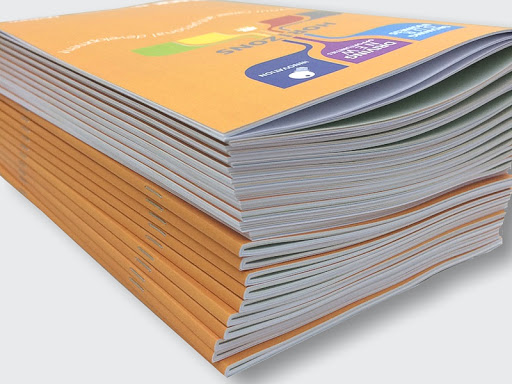The Most Common Mistakes to Avoid in Your Booklet Printing Design
The Most Common Mistakes to Avoid in Your Booklet Printing Design
Blog Article
The Crucial Overview to Comprehending Brochure Printing Options and Techniques
The process of booklet printing entails several considerations that can significantly impact the end product. From choosing the appropriate layout and dimension to comprehending the nuances of binding approaches, each option plays a vital role. Additionally, variables such as paper stock and printing techniques more influence the effectiveness of the pamphlet. As one navigates these options, it comes to be crucial to understand just how they adjoin and what that means for the total result.
Understanding Brochure Layouts and Dimensions
When thinking about booklet printing, comprehending the various styles and sizes readily available is important for attaining the desired discussion. Booklets can be created in numerous styles, consisting of saddle-stitched, spiral-bound, and perfect-bound, each offering unique benefits. Common dimensions vary from conventional letter (8.5 x 11 inches) to smaller sized options like A5 (5.8 x 8.3 inches), permitting flexibility based upon web content and target audience.Selecting the suitable dimension can affect both the layout and visitor involvement. Larger sizes may match visually driven material, while smaller sized layouts may be a lot more easy to use and portable. Furthermore, the variety of web pages affects the option of binding approach, as thicker booklets may need tougher bindings. Inevitably, understanding these elements enables an extra customized approach, guaranteeing that the end product straightens with the desired message and visual, enhancing the overall effectiveness of the communication.
Picking the Right Paper Stock

Binding Methods: Choices and Factors To Consider
When it pertains to binding approaches for booklets, a number of choices are readily available, each with distinct advantages. Saddle stitch binding provides a cost-efficient solution for thinner booklets, while ideal binding methods give an even more polished search for thicker publications. Wire-O binding stands apart for its toughness and convenience of usage, making it suitable for records that call for flexibility.
Saddle Stitch Binding
Saddle stitch binding offers a economical and functional remedy for constructing pamphlets, making it a preferred selection amongst organizations and authors. This binding approach includes folding sheets of paper in half and stapling them along the fold line, producing a neat and organized look. Normally appropriate for brochures with a lower page matter, saddle sewing is suitable for publications, pamphlets, and instructional products. The simpleness of this method permits quick manufacturing and is commonly favored for advertising products or short runs. Nonetheless, it is important to note that saddle stitch binding may not be suitable for thicker pamphlets, as the back may not hold up under raised weight. Overall, it continues to be a reliable alternative for numerous printing tasks.
Perfect Binding Methods
Perfect binding is a widely made use of technique that gives a expert and polished surface to publications and pamphlets. This technique entails gluing the web pages together at the spine making use of a strong adhesive, enabling a clean side and the ability to hold a larger variety of pages contrasted to saddle sewing. Perfect binding is especially ideal for thicker brochures, such as magazines and annual records, where a sturdy, flat back is desired. Furthermore, it supplies the option for a published cover that can be designed to improve aesthetic allure. Considerations such as web page matter, paper weight, and the intended use of the brochure must be taken right into account, as they can influence resilience and general top quality.
Wire-O Binding Alternatives
Wire-O binding, recognized for its resilience and versatility, uses a superb alternative for pamphlets that require easy page turning and a professional appearance. This binding method employs a series of metal loopholes that hold web pages firmly, permitting them to exist level when open. It is specifically ideal for handbooks, directories, and presentations because of its robust nature. Wire-O binding is available in various colors and diameters, suiting various page counts and densities. In addition, it permits the inclusion of covers and tabs, enhancing the brochure's overall visual. Factors to consider for Wire-O binding consist of the selection of cable color, the dimension of the loopholes, and the level of personalization wanted, every one of which can greatly affect the end product's look and performance.
Digital vs. Offset Printing: Which Is Best for You?
When choosing a printing approach for booklets, comprehending the differences between digital and offset printing is necessary. Digital printing utilizes modern innovation to generate premium prints quickly and economically, making it excellent for brief runs or jobs needing fast turn-around times. It permits for customization, supplying the capability to publish on-demand with minimal waste.In contrast, offset printing is a standard technique that masters producing huge amounts with regular high quality. It includes transferring ink from a plate to a rubber blanket, then to the paper, which results in exact details and vivid shades. Balance out printing commonly needs longer arrangement times and is a lot more affordable for larger volumes.Ultimately, the choice between digital and counter printing depends on task demands, spending plan, and preferred quantity. For tiny, time-sensitive projects, electronic may be the very best option, while countered might be preferable for bigger, high-quality productions.

Creating Your Brochure: Tips and Finest Practices
When creating a pamphlet, careful attention to format, typeface selection, and color usage can considerably boost its efficiency. A well-structured format guides the visitor's eye, while ideal fonts guarantee readability and convey the preferred tone. Furthermore, reliable use color can stimulate feelings and highlight vital details, making the total design extra impactful.
Choosing the Right Layout
Exactly how can one effectively select the appropriate design for a pamphlet? First, it is necessary to assess the booklet's objective and target market. A clean, organized design improves readability and interaction. Making use of a grid system can help in aligning aspects consistently, producing a specialist appearance. In addition, incorporating aesthetic hierarchy with varying sizes and placements of pictures and message can lead the viewers's eye and highlight vital information. It is likewise essential to leave sufficient white space, which protects against overcrowding and permits better focus. Examining different designs with mock-ups can offer understanding into just how the design does in real-world circumstances, making certain that the last product meets both functional and visual requirements. Practical Selecting Ideal Fonts
A well-chosen font style can considerably boost the total design of a pamphlet, enhancing the design and enhancing the content's message. The choice of typefaces should take into consideration readability, especially for body message, as it ensures the info comes to all visitors. Sans-serif font styles are typically favored for digital styles, while serif fonts can lend check over here a conventional feel in published products. It's suggested to limit font options to two or three to preserve visual coherence. Furthermore, font size plays a vital function; headings must be distinctive yet not frustrating, while body helpful hints message ought to fit for reading. When choosing fonts, alignment with the pamphlet's motif and target market is necessary for efficient communication and aesthetic allure.
Effective Usage of Shade
Color functions as a powerful tool in pamphlet layout, forming understandings and guiding viewers feelings. It can evoke sensations of excitement, trust fund, or calmness, depending on the tones selected. Designers should consider color theory principles, making sure that the selected palette lines up with the booklet's message and target audience. For instance, utilizing warm shades like red and orange can create seriousness, while cooler tones like environment-friendly and blue foster tranquility.Additionally, contrast plays a crucial role; corresponding colors can improve readability and visual charm. Uniformity in shade usage throughout pages better enhances brand name identification and cohesion. Inevitably, efficient shade implementation not only catches interest yet additionally strengthens the pamphlet's purpose, making it an essential facet of successful style.
Finishing Touches: Coatings and Unique Effects
While several consider the web content and layout of a booklet the most crucial components, the ending up touches, such as coverings and unique impacts, play a necessary role in enhancing its overall allure. Coatings can supply protection and sturdiness, making sure that the brochure endures wear and tear. Matte finishes provide a sophisticated, non-reflective surface, while glossy coverings can make colors appear more distinctive and vibrant. Unique effects, like embossing or foil stamping, include a tactile measurement that can create a memorable perception. These methods can highlight certain locations, attracting interest to essential info or developing aesthetic rate of interest. Furthermore, UV covering can supply a high-shine surface that elevates the total look.Together, these finishing touches not just improve the pamphlet's visual yet likewise communicate professionalism and reliability and focus to detail, ultimately leaving a long-term influence on the reader.
Expense Considerations for Pamphlet Printing
Comprehending the numerous expense factors to consider for brochure printing is important for businesses and companies aiming to optimize their budgets. Trick elements affecting expenses consist of the option of ink, binding, and paper techniques. Higher quality materials, such as superior paper or specialized inks, normally enhance the total expenditure. Furthermore, the dimension and page count of the brochure play a substantial duty; larger booklets require even more resources and time to produce.Another crucial consideration is the printing strategy, whether electronic or balanced out, as each has its very own prices framework and suitability for different amounts. Organizations ought to likewise consider style prices, which can vary based upon complexity and using professional services. Eventually, shipping and handling charges can include in the total amount, specifically for large orders. By examining these aspects, organizations can make informed choices that line up with their economic capabilities while achieving the preferred high quality in their published materials.
Regularly Asked Inquiries
What Are the Ecological Effects of Pamphlet Printing?
The ecological impacts of booklet printing include logging from paper manufacturing, carbon exhausts from transport, and waste generation from discarded materials - Booklet Printing. Sustainable methods, such as utilizing recycled paper and green inks, can minimize these impacts
How Can I Ensure Shade Precision in My Booklet?
To assure shade accuracy in a pamphlet, one must utilize adjusted screens, employ specialist color profiles, perform test prints, and pick high-grade printing solutions that offer shade matching and proofing choices for best outcomes.
What Is the Common Turn-around Time for Brochure Printing?
The typical turn-around time for booklet printing differs depending on the intricacy and quantity - Booklet Printing. Normally, it ranges from a couple of days to two weeks, affected by factors such as publishing methods and completing requirements
Exist Minimum Order Quantities for Booklet Printing?

Can I Publish Booklets in Multiple Languages?
Printing pamphlets in several languages is feasible. Many printing solutions supply options for multilingual or bilingual layouts, enabling for effective communication. Cautious preparation assurances that create components suit various languages without jeopardizing readability or appearances. Additionally, elements such as paper stock and printing techniques further influence the effectiveness of the booklet. When considering booklet printing, understanding the numerous formats and sizes available is important for achieving the desired discussion. When picking a printing approach for brochures, comprehending the differences between electronic and counter printing is necessary. Furthermore, the image source size and page matter of the brochure play a considerable role; bigger pamphlets need more sources and time to produce.Another crucial consideration is the printing technique, whether electronic or balanced out, as each has its own rates framework and suitability for various amounts. The environmental influences of brochure printing include logging from paper production, carbon emissions from transport, and waste generation from disposed of materials.
Report this page